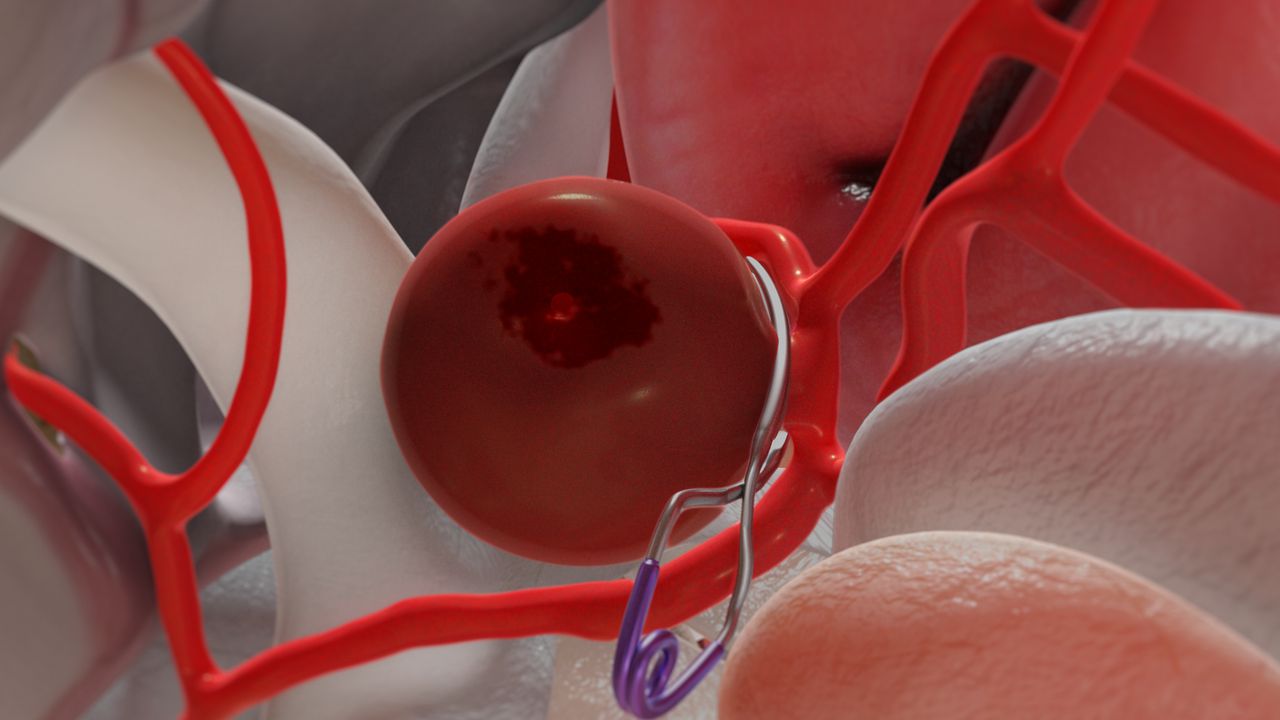
What are Intracranial Aneurysms?
Intracranial aneurysms are referred to as a “bulge” or “balloon” in a blood vessel in the brain. An aneurysm can leak or rupture, causing bleeding in the brain which is called a hemorrhagic stroke. When an aneurysm ruptures an individuals life is threatened. Emergency medical treatment is necessary in this situation.
Most brain aneurysms, however, do not rupture or create any other health problems which means that most noticeable symptoms do not occur until after a rupture. These types of aneurysms are often detected during tests for other conditions.
What people are affected by brain aneurysms?
It is difficult to estimate exactly how many people are affected by brain aneurysms. Numbers may vary since many people with aneurysms are not diagnosed. Some experts believe that it 1 in 20 people may have intracranial aneurysms while others believe the number to be at around 1 in 100 people. The number of ruptured aneurysms per year is a lot smaller with every 1 in 12,500 people in England and 30,000 people in America.
Although brain aneurysms can occur in anyone and at any age, most patients affected are adults between the ages of 30 and 60. In addition, it is more common in women than in men. Patients with certain inherited disorders are also at higher risk. Other factors may develop over time and include: high blood pressure, cigarette smoking, drug abuse, and advanced age.
How are brain aneurysms treated?
When a brain aneurysm is detected before a rupture, treatment may be recommended to prevent rupturing in the future. However, since most cerebral aneurysms do not rupture, treatment is only carried out if the risk of rupture is particularly high.
Several factors may determine which treatment type is recommended. This includes a patient’s age, size and location of the aneurysm, the patient’s family medical history, and any other conditions a patient may have.
Treatment will usually involve coiling or an open operation, like a clipping procedure. For patient’s categorized as low risk of rupture, regular check-up appointment will be used to monitor the aneurysms. Some patients may be given medication to reduce blood pressure and given other advice about ways to reduce chances of rupture, such as avoiding smoking.
The same techniques used to prevent ruptures are also used to treat ruptured brain aneurysms.

Possible Symptoms
For symptoms to become more apparent the aneurysms will either become larger or rupture.
A large unruptured aneurysm that is growing steadily may press on tissues and nerves causing: pain above and behind the eye, numbness, weakness, paralysis on one side of the face, a dilated pupil, vision changes or double vision.
When an aneurysm bursts a patient will experience a sudden and severe headache. They may also develop double vision, nausea, vomiting, stiff neck, sensitivity to light, seizures, loss of consciousness, or cardiac arrest. Seek immediate medical attention if you experience a sudden, severe headache, especially if combined with any other symptoms.
Resources and Other Readings
The National Library of Medicine
The National Health Service of England

